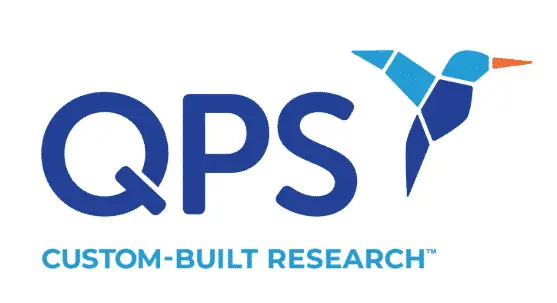A large team of researchers has made great strides in developing a census and atlas of the cell types found in the mammalian primary motor cortex, advancing efforts to classify the vast complex network of diverse brain cells. Their results show that this brain region has as many as 116 different cell types, and the findings expand understanding of how brain cell types are organized. This effort will not only contribute to the eventual mapping of the entire brain, but it can also fuel a deeper understanding of the brain’s neural networks and how neural irregularities affect the body and mind.
The research results, published online across 17 papers in the journal Nature, reflect five years of work by a team of more than 250 researchers. The project is supported by the National Institutes of Health’s Brain Research Through Advancing Innovative Neurotechnologies (BRAIN) Initiative and is organized by the BRAIN Initiative Cell Census Network (BICCN), which consists of integrated centers and laboratories including U01, RF1, and U19 data generating centers, R24 data archives, and a U24 Brain Cell Data Center (BCDC) working collaboratively to generate, map, and share these data with the community.
Differentiating Cell Types
The findings represent the integration of data across studies of brain cells from mice, non-human primates, and humans using multiple methods for categorizing cells into different types. The main characteristics examined were:
- Cell shape (morphology)
- Connectivity
- Location in the brain
- Connections with other brain regions (projection mapping)
- Gene expression
- Patterns of epigenetic modification (such as a cell’s chromatin structure and the addition of methyl groups to DNA)
- Electrophysiology
“The big advance by the BICCN is that we combined many different ways of defining a cell type and integrated them to come up with a consensus taxonomy that’s not just based on gene expression or on physiology or morphology, but takes all of those properties into account,” said Dirk Hockemeyer, a study co-author and associate professor of cell and developmental biology at the University of California at Berkeley. “So, now we can say this particular cell type expresses these genes, has this morphology, has these physiological properties, and is located in this particular region of the cortex. So, you have a much deeper, granular understanding of what that cell type is and its basic properties.”
Integrating Research Methods
By collaborating across disciplines and applying machine learning and artificial intelligence to the large-scale analyses, the researchers identified and characterized about five times more cell types and subtypes than were previously recognized. Single-cell RNA sequencing (scRNA-seq), which identifies all the specific messenger RNA molecules and their quantities in each cell, was one of nearly a dozen separate experimental methods used by the BICCN team to characterize the different cell types in three different mammals: mice, marmosets, and humans. Another research method of note focused on the connections between cells – the researchers previously used CRISPR-Cas9 to create mice in which a specific cell type is labeled with a fluorescent marker, allowing them to track connections these cells make throughout the brain. Building on that, the researchers created two strains of “knock-in” reporter mice to map connections of the newly identified cell types.
Statisticians integrated the data from all the experimental methods to determine the best system for classifying or clustering cells into different types. While it is possible to apply many statistical algorithms to support this, the challenge was determining which clusters and which cell types were truly different from one another.
“Before, we had something like 10 or 20 different cell types that had been defined, but we had no idea if the cells we were defining by their patterns of gene expression were the same ones as those defined based on their electrophysiological properties, or the same as the neuron types defined by their morphology,” said study co-author Helen Bateup, an associate professor of molecular and cell biology at the University of California, Berkeley.
Researchers acknowledged that future studies could show that the number of cell types identified in the motor cortex is an overestimate, but the current studies are a good start in assembling a cell atlas of the whole brain.
Boost for Future Research
The data and software used by the team are accessible online and will advance work to further define different types of brain cells, how they are connected, and how they function together – eventually aiding in the understanding of brain disorders.
“One of our many limitations in developing effective therapies for human brain disorders is that we just don’t know enough about which cells and connections are being affected by a particular disease and therefore can’t pinpoint with precision what and where we need to target,” said John Ngai, director of the BRAIN Initiative. “Detailed information about the types of cells that make up the brain and their properties will ultimately enable the development of new therapies for neurologic and neuropsychiatric diseases,” he predicted.
Did you enjoy this blog post? Check out our other blog posts as well as related topics on our Webinar page.
QPS is a GLP- and GCP-compliant contract research organization (CRO) delivering the highest grade of discovery, preclinical and clinical drug research development services. Since 1995, it has grown from a tiny bioanalysis shop to a full-service CRO with 1,100+ employees in the U.S., Europe and Asia. Today, QPS offers expanded pharmaceutical contract R&D services with special expertise in neuropharmacology, DMPK, toxicology, bioanalysis, translational medicine and clinical development. An award-winning leader focused on bioanalytics and clinical trials, QPS is known for proven quality standards, technical expertise, a flexible approach to research, client satisfaction and turnkey laboratories and facilities. Through continual enhancements in capacities and resources, QPS stands tall in its commitment to delivering superior quality, skilled performance and trusted service to its valued customers. For more information, visit www.qps.com or email info@qps.com.








